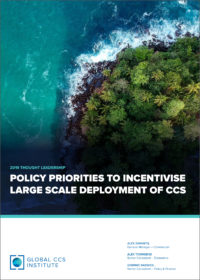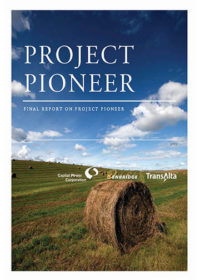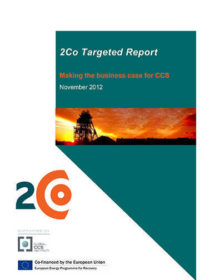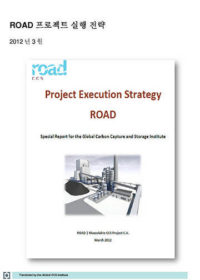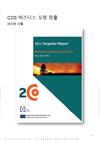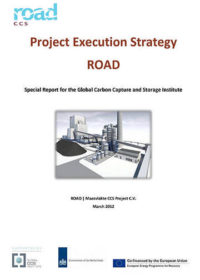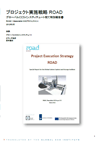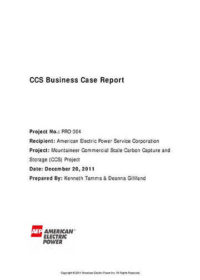Resources
Publications
Our publications, reports and research library hosts over 500 specialist reports and research papers on all topics associated with CCS.
View our Publication Library Disclaimer.
Filter by
Policy priorities to incentivise large scale deployment of CCS
2nd April 2019
Topic(s): Business cases, Carbon capture use and storage (CCUS), Policy law and regulation
Carbon capture and storage (CCS) is essential to achieving climate change mitigation targets. It is the only feasible technology that can deliver deep emissions reductions in many industrial processes that are vital to the global economy, such as steel, cement and chemicals production. In combination with bioenergy used for power generation or biofuel production, it provides one of the few technologies that can deliver negative emissions at scale; unambiguously required to limit temperature rises to meet the Paris climate targets.
While the critical role of CCS has been demonstrated in many reports, the policies in place today are insufficient to ensure CCS deployment scales up at the rate required. This paper seeks to address the current policy gap by describing priorities for policymakers to support the transition from current to future rates of deployment of CCS.
The Institute's report explores how to stimulate investment in CCS. The paper also identifies concrete policy actions and reviews the progress achieved until now by identifying the policies and commercial conditions that have enabled investment in the 18 large-scale CCS facilities currently in operation, and the additional five that are under construction.
Disclaimer
The content within the Global CCS Institute Publications, Reports and Research Library is provided for information purposes only. We make every effort and take reasonable care to keep the content of this section up-to-date and error-free. However, we make no claim as to its accuracy, currency or reliability.
Content and material featured within this section of our website includes reports and research published by third parties. The content and material may include opinions and recommendations of third parties that do not reflect those held by the Global CCS Institute.
Project Pioneer: final report on Project Pioneer
29th April 2013
Topic(s): Business cases, Carbon capture use and storage (CCUS), Project financing
After completion of a feasibility study and despite substantial government and industry investment, the Project was not economically feasible due to insufficient CO2 sales markets and emissions pricing in Alberta and Canada.
Disclaimer
The content within the Global CCS Institute Publications, Reports and Research Library is provided for information purposes only. We make every effort and take reasonable care to keep the content of this section up-to-date and error-free. However, we make no claim as to its accuracy, currency or reliability.
Content and material featured within this section of our website includes reports and research published by third parties. The content and material may include opinions and recommendations of third parties that do not reflect those held by the Global CCS Institute.
Making the business case for CCS
1st February 2013
Topic(s): Business cases, Carbon capture use and storage (CCUS)
The report covers the following:
- A brief overview of 2Co and its CCS project in the UK, DVPP.
- A summary of existing business case-related knowledge products previously published for the Institute by other CCS projects, summarising the factors of most importance to their business cases.
- A description of the market and regulatory context for CCS faced by DVPP and other projects in the UK.
- A discussion of the financing challenge that 2Co faces and the resulting financing strategy.
- The resulting business plan, including revenue and cost profiles, sensitivities and prospects for future cost reduction.
- A description of the key risks to the project and mitigation plans.
Disclaimer
The content within the Global CCS Institute Publications, Reports and Research Library is provided for information purposes only. We make every effort and take reasonable care to keep the content of this section up-to-date and error-free. However, we make no claim as to its accuracy, currency or reliability.
Content and material featured within this section of our website includes reports and research published by third parties. The content and material may include opinions and recommendations of third parties that do not reflect those held by the Global CCS Institute.
Disclaimer
The content within the Global CCS Institute Publications, Reports and Research Library is provided for information purposes only. We make every effort and take reasonable care to keep the content of this section up-to-date and error-free. However, we make no claim as to its accuracy, currency or reliability.
Content and material featured within this section of our website includes reports and research published by third parties. The content and material may include opinions and recommendations of third parties that do not reflect those held by the Global CCS Institute.
2Co 에너지 사는 영국에서 이루어지고 있는 Don Valley Power Plant 프로젝트(이하 DVPP)를 성공적으로 진행시키기 위하여, 어느 프로젝트에나 실제로 적용할 수 있는 CCS 비즈니스 모델을 개발하고 이를 여타 프로젝트와 공유하기 위하여 글로벌CCS연구소와 공동으로 본 보고서를 작성하였다. 2Co사는 전 세계 CCS를 위한 자체 개발 비즈니스 모델을 공유함으로써 CCS관련 기관의 구성원들이 사용할 수 있는 실용적인 정보를 제공하고자 한다.
본 보고서는 다음을 포함하고 있다:
• 2Co사와 영국의 CCS 프로젝트인 DVPP대한 간략한 개관
• CCS프로젝트를 진행 중인 기관들에 제공되었던 보고서와 관련된 기존 비즈니스 모델 요약― 가장 중요한 요소들 중심으로
• 영국에서 DVPP와 다른 프로젝트들이 직면한 CCS 시장과 규제상황에 관한 기술
• 2Co가 직면하고 있는 자금조달 관련 문제들에 대한 논의와 이로 도출된 자금조달 전략
• 비용과 수익 모델, 민감도(sensitivities), 그리고 미래 비용 절감을 위한 전망 등 비즈니스 계획
• 프로젝트의 주요 리스크와 리스크 경감 계획에 대한 기술
Disclaimer
The content within the Global CCS Institute Publications, Reports and Research Library is provided for information purposes only. We make every effort and take reasonable care to keep the content of this section up-to-date and error-free. However, we make no claim as to its accuracy, currency or reliability.
Content and material featured within this section of our website includes reports and research published by third parties. The content and material may include opinions and recommendations of third parties that do not reflect those held by the Global CCS Institute.
Project execution strategy: ROAD. Special report for the Global Carbon Capture and Storage Institute
23rd March 2012
Topic(s): Business cases, Carbon capture use and storage (CCUS)
As the project approaches the key milestone of a decision on investment from its parent companies, this report aims to outline the future path of the project. An overview of upcoming milestones and a discussion on relevant activities and the project execution strategy is provided. Following the final investment decisions (FID), two consecutive organisations will be formed, the first focusing on design and construction up until 2015, whilst the second will focus on operation of the project between 2015 and 2020. The project employs skills of specialists from across both parent companies, with strategic partners playing a role throughout the development and operational phases of the project.
The project schedule is driven by both the MPP3 construction schedule and cost optimisation. In order to avoid MPP3 outage penalties, the tie-in works have to be executed on-track. ROAD focuses on cost optimisation and controlling. Both drivers led to the specific construction plan and the clustering of heavy lift components. The heavy lifting activities of large vessels and the main compressor are on the critical path. Thanks to the clustering of heavy lift components the cost and project schedule can be squeezed significantly. After the lifting and placement of these major components the capture plant can be assembled. In the second phase, the transport and storage works will become the major point of attention. From execution of the front end engineering and design (FEED) stage, a much more detailed state of engineering allowed ROAD to reduce uncertainties. The execution phase risks for construction, finance, scheduling, stakeholder engagement and permitting are addressed in this report. The risk mitigation actions progressively decreased the project contingencies. These contingencies represent the exposure due to volatile market prices, state of engineering detail, planning uncertainties and other issues. The FEED study reduced the total CAPEX contingency from 25 per cent (pre-FEED) to 10 per cent (post-FEED) of total CAPEX. The remaining key risks for the construction phase are the interfaces with MPP3, the timely signed EPC contract for the construction of the capture plant, and the CAPEX risk and commercial negotiations for the transport and storage chain. Furthermore, permitting and stakeholder management are points of attention. Objections or appeal on published permits from NGO’s or local organisations could result in scheduling issues.
The project budget is governed by the company’s organisational structure, with a budget split between project office and governance, stakeholder management, capture, and lastly, transport and storage. Budget is split over the life of the project into two phases: the design and construction phase (2010-2014), and the operational phase (2015-2019). Following the operational period, provisions have been made for plant decommissioning, and monitoring of the storage site. In ROADs probabilistic models the scheduling risk of FID postponement can also be visualised taking into account the probability of risks and defined mitigation actions. Please note that this report only highlights the key aspects of ROAD’s execution strategy.
Disclaimer
The content within the Global CCS Institute Publications, Reports and Research Library is provided for information purposes only. We make every effort and take reasonable care to keep the content of this section up-to-date and error-free. However, we make no claim as to its accuracy, currency or reliability.
Content and material featured within this section of our website includes reports and research published by third parties. The content and material may include opinions and recommendations of third parties that do not reflect those held by the Global CCS Institute.
Disclaimer
The content within the Global CCS Institute Publications, Reports and Research Library is provided for information purposes only. We make every effort and take reasonable care to keep the content of this section up-to-date and error-free. However, we make no claim as to its accuracy, currency or reliability.
Content and material featured within this section of our website includes reports and research published by third parties. The content and material may include opinions and recommendations of third parties that do not reflect those held by the Global CCS Institute.
AEP Mountaineer CCS business case report
20th December 2011
Topic(s): Business cases, Carbon capture use and storage (CCUS)
The purpose of this report is to examine the issues surrounding installation of carbon capture technology on AEP’s generating fleet based on lessons learnt from American Electric Power’s (AEP) project at Mountaineer coal-fired generating station. This report discusses the following issues associated with justification and use of this technology.
- AEP is an investor owned utility with an obligation to provide electric service. The company is subject to governmental regulation which has implications on AEP’s ability to finance a commercial-scale CCS project.
- Financial modelling completed by AEP and discussion of results. The report also uses output of modelling and looks at financial risks and the need for financial incentives to fund first-of-a-kind commercial-scale projects.
- The difficulties associated with financing a project without government backing. Also the cost and use of the CO2 by-product and its competitiveness with other CO2 production sources.
- AEP’s rationale surrounding its decision to suspend the Mountaineer CCS project.
AEP’s evaluation includes:
- estimated capital expenses;
- anticipated operations and maintenance costs;
- cost of generating electricity following implementation and during operation of the CCS facility;
- assumptions of legislative impacts;
- consideration of optional CO2 sources, uses and revenue streams;
- financial risk; and
- other elements.
Disclaimer
The content within the Global CCS Institute Publications, Reports and Research Library is provided for information purposes only. We make every effort and take reasonable care to keep the content of this section up-to-date and error-free. However, we make no claim as to its accuracy, currency or reliability.
Content and material featured within this section of our website includes reports and research published by third parties. The content and material may include opinions and recommendations of third parties that do not reflect those held by the Global CCS Institute.
